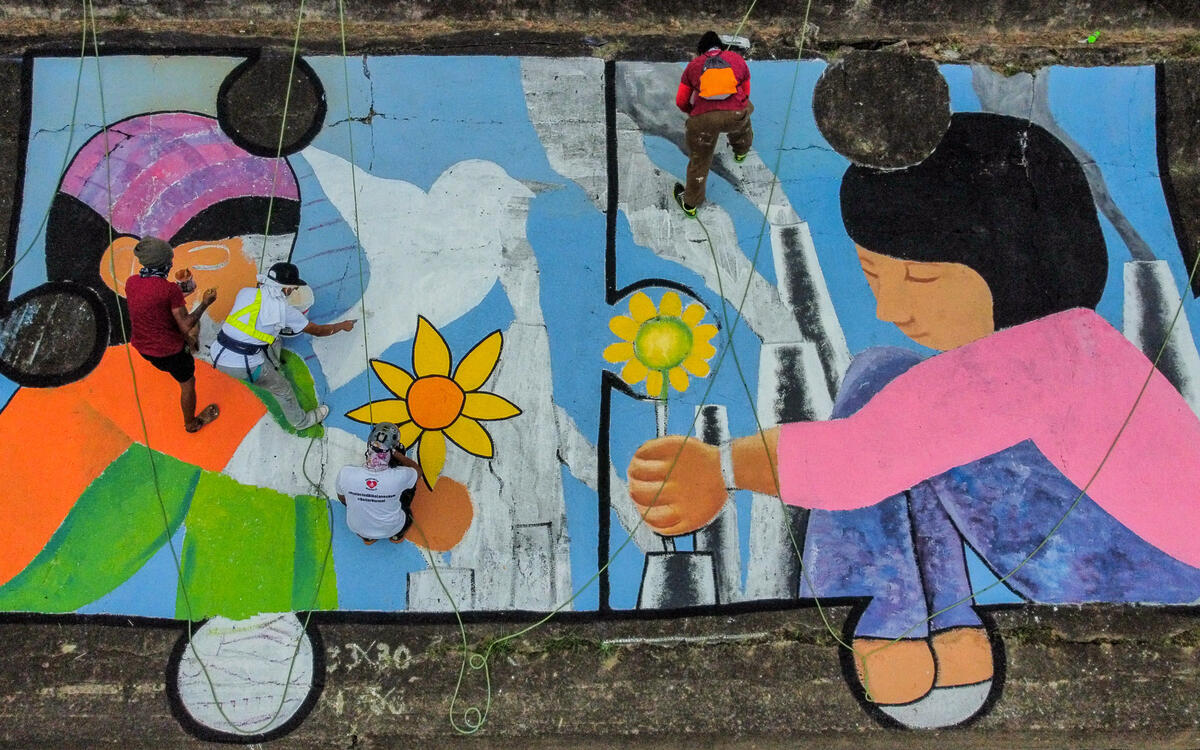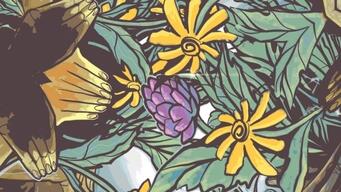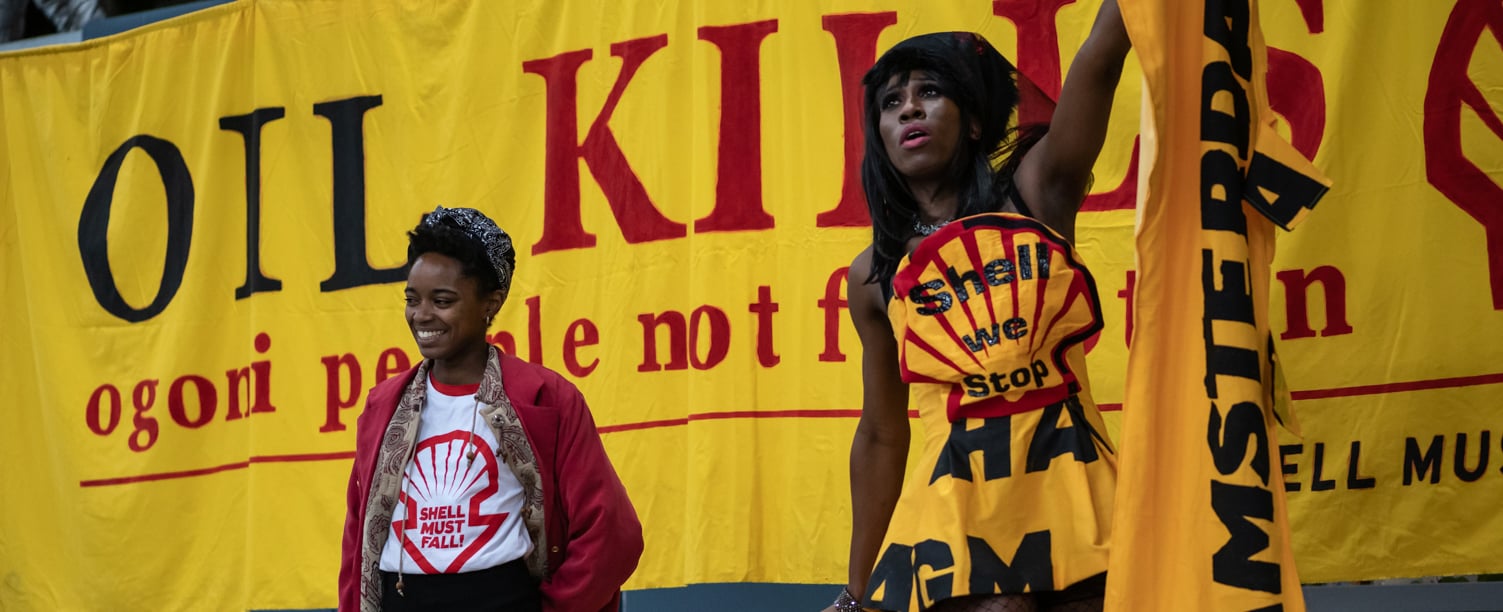I recently found myself contemplating a rather overwhelming question about change. How exactly does it happen. I’d been given the opportunity by Greenpeace South Africa and the Climate Justice Programme to work, over three days, with a group of environmental specialists and activists hailing from seven of South Africa’s nine provinces, representing organisations such as Centre for Environmental Rights, Mining and Environmental Justice Community Network South Africa, Earthlife Africa Jhb and groundWork. Rather unusually the Johannesburg conference venue was tucked into a forest of trees and bushes. The meeting was conceived to explore the possibilities narrative tools could play in amplifying voices, bringing justice and ultimately making a difference in the protection of the planet. Considering this intention the setting was most fitting.
Over the course of the three days we discussed story-telling and the role narrative could play in bringing power to voices often speaking up against large seemingly insurmountable forces. I was frequently moved. Account after account was given as to the untenable circumstances people living in coal-affected and mining communities are dealing with. One story struck a chord with me. Tiny Dlamini speaks with the force and clarity of someone who has worked in this space for long, seen the worst of it and is determined to bring change to her community and people no matter what. She works for the Centre for Environmental Rights representing communities in Gauteng such as Snake Park, where she lives, Meadowlands, Diepkloof, Durban Deep and Mathole to name a few. In communities like these mining companies such as Durban Deep and Harmony Gold take what they need from the ground and leave behind the residue cryptically named tailings. What is deemed valuable is taken out, taken somewhere else, the sludge is what remains. In Snake Park, situated in the Dobsonville township, Tiny speaks of the impact on families. The tailings contain lead arsenic and uranium, essentially radioactive waste. People live alongside these waste heaps, the dust gets into their eyes, their water, their food. The stories spill out of Tiny, the details horrific and tragic. Run-off from the mine dumps ends up in the streams. The animals who drink the water go blind, their offspring are crippled. People bathe in the water. Eczema is a common ailment. The occurrence of children with severe neurological disorders another marker of a community suffering under the effects of mining.
What struck me is that Tiny and people like her have been trying to draw attention to the plight of this community, and others like it, for a while now and yet nothing. Again that question, what then would need to happen for real change to occur. The challenges are many. The government seems to think it is the responsibility of the mining companies to ensure these communities are protected from such effects. However several of the mines are abandoned, inactive. And, according to Tiny, for those that are still in operation finding someone actually accountable is like looking for aquatic life in the waters surrounding her home – there is none. In an attempt to shore up evidence hair samples were taken from the children, high levels of lead arsenic copper and sulphur were found. Each year the animals die by the droves. When I asked Tiny why nothing was being done she didn’t miss a beat – ‘No one cares,’ she said. Importantly this is not an issue that hasn’t received media attention. Aljazeera ran a story, Toxic City: The Cost of Gold Mining in South Africa, interviewed Tiny Dlamini and others working on the project, took images, videos.
I carry no doubt – the women and men I encountered during the workshop were fighters, people standing on the frontline of the battle against mining conglomerates and indifferent government officials; pushing back against the impact mining has on their people, their environments and the ecological climate of their communities. Considering the conditions they were describing I couldn’t help but wonder, how did they keep going, despite a lot of their demands falling on deaf ears, despite being witness to the devastation. Inevitably I started to think about what kind of change, if any, they could expect to see. My guess with something as looming as climate change was that the work was arduous and the gains small, sometimes even difficult to quantify. The feeling of awe I experienced towards the activists, the question of “how do you keep going” came from an innate sense of the impossibility of their task. It seemed to me such people had a lot to teach the world not only about the impacts of coal but as to the very nature of change or, if you will, the art of it. I asked Tiny what kept her motivated and she said, ‘I am the environment. I can’t ignore it.’
Had I been ignoring “it” I wondered? And if I’m honest my answer ought to be ‘yes’. But having seen one cannot un-see. While Tiny’s account involved gold-mining much of the workshop participants were from coal-affected areas including eMalahleni, home to two of Eskom’s power stations. The coal-problem in South Africa is one that involves, to borrow from story-language, many characters each on their own narrative trajectory. And, perhaps unsurprisingly, the most harrowing parts of the story (the “silent killings” Tiny called this) take place in the poorest communities, take place in the dark as it were, on the side lines or, to sustain the metaphor, off the page.
The array of characters I speak of draw from different sometimes overlapping segments of the population and include mining workers, mine owners, various ministries of government, the public sector and experts, the impacted communities, community leaders and activists, local and international donors, and the general public. To add further complexity, the mistake would be in assuming a homogeneity within these different sectors. As with the matroska dolls if you look within any of these segments you’ll find yet more and more characters, differently motivated, impacted and constituted. It occurred to me that to make any change, big or small, happen, a deep understanding of this story – and the characters that populate it – would be required. Because ultimately the strategy for change would need to account for all those segments and all the characters within as well as the dynamic ways in which the impacts criss-cross, and the painful reality that those responsible aren’t always impacted and those impacted are often not responsible.
Contemplating the landscape of the coal-problem in South Africa and the expanse of people either directly or indirectly involved in that landscape the notion of collective action came to mind. Collective action refers to action taken together by a group of people whose goal is to enhance their status and achieve a common objective. There’s no question that the people who gathered for the three days of the storytelling workshop were engaged in collective action. However, I wondered as to the extent of that collectivity as well as the quality of its organisation. As a relative outsider looking in, I found I had questions. Did they have a clear map of what change(s) they were after, and how that change could and would manifest? When? With whom would they need to engage in order for that change to occur? What were the little steps leading up to that change and did they have a sense as to whether they were on track or not? And perhaps the two most important questions for me: as someone not directly affected, what is my role as an urbanite and a writer and what is the way to proceed? As usual answers are harder to come by. My sense however is that the degree to which I find answers to my questions will be commensurate with how involved I’m willing to become. Tiny did not hesitate. ‘You must come and see it for yourself,’ she said, her words as much an invitation as a challenge. Having seen one cannot un-see. My ignorance greeted me at the workshop in Johannesburg, do I return, once the workshop is over, to that same ignorance or, having been exposed to an often obscured counter narrative about coal, the impacts of coal and who really pays the price do I seek even further, empower myself with knowledge and encourage others to do the same?
Margaret Mead is quoted often, that change is said to be achieved by a small group of people saying the same thing consistently over a long period of time. What strikes me the most about this statement is the “a small group of people”. In my mind I always imagined big change necessitated a big group. As activist after activist got up to share the story of the impacts of mining in their community I kept thinking, we need another hundred of them each. But perhaps what we need is however many we have. However many it takes to shout together so the government and the mining conglomerates are finally forced to listen. Because the real price of coal is much higher than any woman man or child should ever have to pay.



